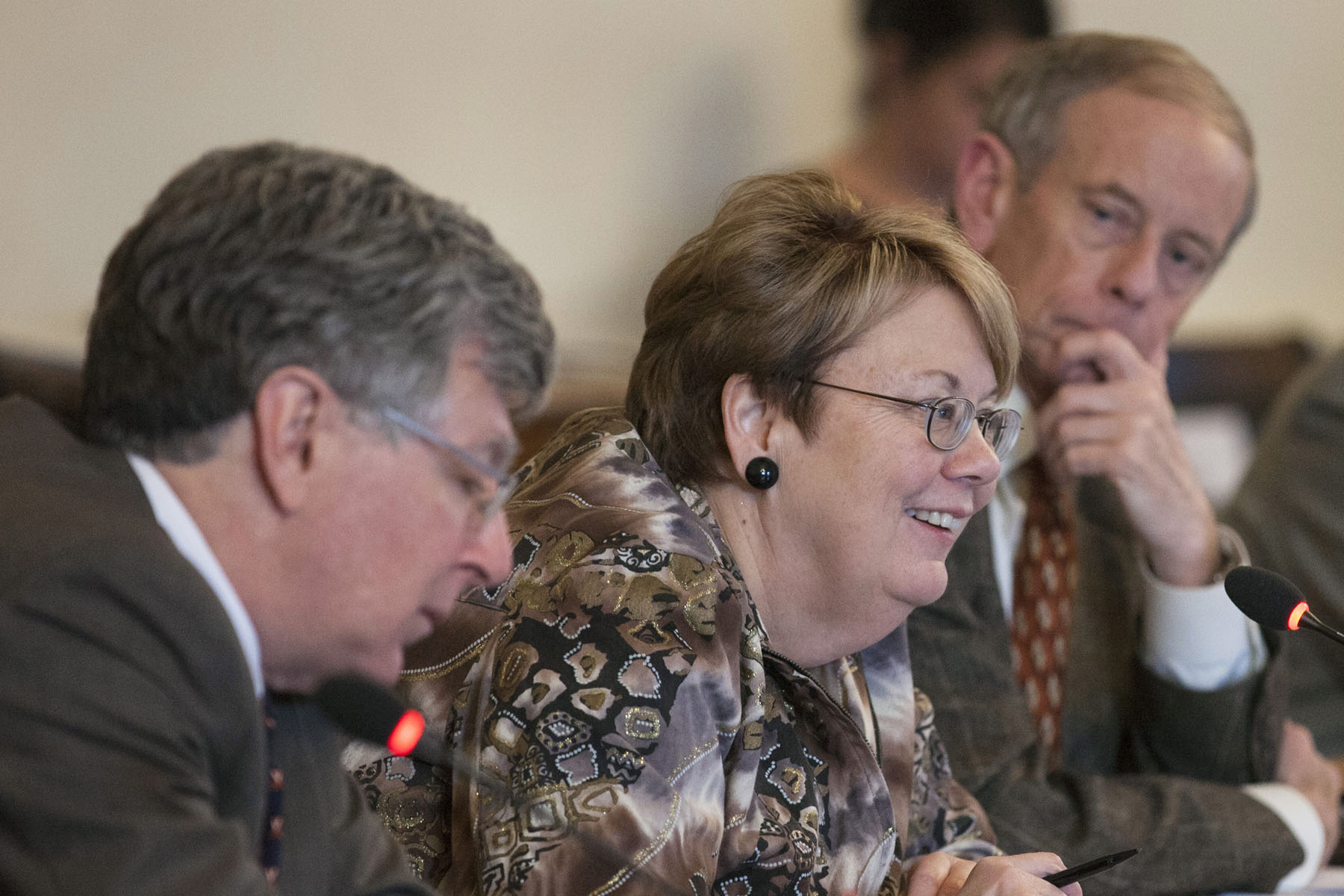The University of Virginia’s plan for the future will include practical, measurable steps to address the challenges confronting higher education, but will also reflect U.Va.’s unique values, President Teresa A. Sullivan told members of the Board of Visitors Friday.
Sullivan’s remarks came as she updated a Board of Visitors committee on the strategic planning process launched at the beginning of this academic year. The board is scheduled to receive a draft of the completed plan in September. When approved, it will guide the University’s operations for years to come.
“I believe U.Va. can emerge as the leader in public higher education during this period of tremendous challenges,” Sullivan told the board. “If we don’t set an example by meeting the challenges, all public universities are going to struggle.”
The president also reported that she’s asked the Faculty Senate to update the University’s mission statement, and that she is developing a vision statement that will define the University’s aspirations.
Sullivan said the University isn’t in need of a new mission, but rather a new way of expressing that mission for the 21st century; the current statement dates to 1985. Unlike the mission statement – which seeks to distill what the University is today – the vision statement will lay out what U.Va. hopes to be in coming years, she said.
“Thomas Jefferson founded this University with a specific purpose: to create an educated citizenry to sustain the republic,” Sullivan said. “This founding story makes us different from our peers, and it gives us inspiration and a clear sense of purpose today: We want to be the premier training ground for national and global leaders.”
Sullivan said she is still developing that vision statement, but said it will require that the University continue to break down barriers between disciplines, expand its global footprint and re-focus its research to leverage strengths in big data, biomedical sciences, global health and other areas, while also adjusting as necessary to meet the needs of a changing job market.
“We will offer the very best residential education in the country, because, even as we experiment with new technologies, we know that face-to-face education is the best means for teaching and learning,” she said, “especially here, where the Academical Village is an archetype and metaphor for how we teach and learn.”
Senior Vice Provost J. Milton Adams, who is heading up the strategic planning effort, updated the committee on the work done by seven working groups tasked with evaluating areas of the University’s operation, and also on work done by consultants at Maryland-based Art & Science, who are interviewing both the board members and a group of about 20 higher education thinkers around the country.
“We have identified, along with our consultants, nine institutions that we will measure ourselves against” in the strategic planning process, Adams said. Four of those institutions are public and five are private.
Also during the meeting, chairs from three of the working groups – Dean Robert Bruner of the Darden School of Business, who chairs the Streamlining Working Group; Vice President and Chief Information Officer James Hilton, who chairs the Technology Working Group; and Jeffrey Walker, chairman of the Council of Foundations, who chairs the Synergy Working Group – updated the committee on the work their groups have been doing.
The strategic planning steering committee will meet again Feb. 18, and board members Frank B. Atkinson and Linwood H. Rose – who are chairing the Board of Visitors’ special committee on strategic planning – will report to the full board on the planning process.
Sullivan said that her administration plans to take immediate action on many of the ideas identified by the working groups. “Some of these ideas might make so much sense that immediate implementation is a better choice than waiting to incorporate them into the strategic plan,” she said.
Since December, there have been eight public hearings as part of the planning process: one for each of the seven work groups, and a more general one that sought student input. The work groups have now passed their initial recommendations, based in part on those hearings, to the steering committee.
“I was impressed with the hard work and creativity that went into the working group reports,” Sullivan said. “At this point, I think our planning effort needs two things: It needs to be more aspirational, and it needs to have intellectual direction.”
To that end, Sullivan has asked each of the University’s deans to prepare her two items by Thursday: a paragraph about aspirations for U.Va., and another paragraph about the most important intellectual directions for the University in the next five to 10 years.
“This should help give direction to our planning,” she said. “All these next steps will keep the planning process moving at a brisk pace.”
The working group reports – which are available online – will eventually be boiled down to around five big ideas or priorities, Sullivan said. Planners will add specific tactics for achieving those goals and metrics to measure their success.
“That will be the general structure of the strategic plan: aspiration and intellectual direction, backed by concrete tactics and metrics,” she said.
Media Contact
Article Information
February 11, 2013
/content/sullivan-offers-insight-strategic-planning-process

